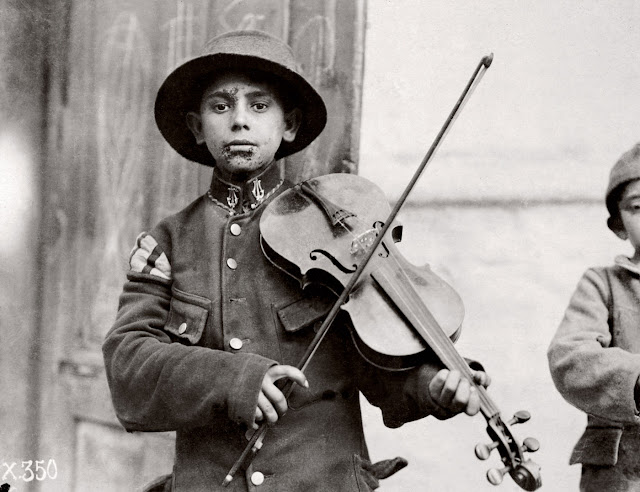A Very Short Post About the “Christmas Fiddler”
Some time ago I was browsing though a huge collection of historical photographs. One caught my attention particularly. On the one hand, there was nothing that was separating it from the others. On the other hand, I just kept looking at it. The boy is somehow vulnerable and proud at the same time. The composition is observant, and yet not voyeuristic.
The photo had the title, so I decided to google further. While I was doing that, I just asked myself, is it even possible to imagine the history of 19th and 20th century without photography or film? While I was dealing with my trite thoughts, I have realised that this photo was so much more than just a random photo that caught my attention.
The photo, “Christmas Fiddler” was taken by a famous US photographer Lewis W. Hine. Hine, a sociologist, used to photograph migrants and child labourers, with a goal to use his photographs to promote social change. He made his name by taking photos of children working in steal factories in and around Pittsburgh. During the First World War he followed the American Red Cross, and that brought him to Europe. In December of 1918, he was in Belgrade, where this photograph was taken. The unnamed Belgrade boy was photographed on 25th of December 1918.
Somehow everything is distorted in this photo. A boy who is working instead of playing. He is wearing a uniform. And not just any uniform. It is an Austro - Hungarian uniform. His collar insignia belonged to the Regimentsmusik of K. u. K. army. At that point, the Empire already moved from geographical to historical atlases, and yet, it still lived on through a street musician in Belgrade. A button is missing. The cut on the right sleeve points to the fact that a soldiers uniform was shortened, to adapt it for the new user. Even though the war was over, his helmet is still on. It is too big for him. Just like his violin (looks like 4/4). His face has seen better days.
I have deep affection for this photo. If anyone plans to write something about the end of the war in the Balkans, please consider using it. It is really worth thousand words.
The photo had the title, so I decided to google further. While I was doing that, I just asked myself, is it even possible to imagine the history of 19th and 20th century without photography or film? While I was dealing with my trite thoughts, I have realised that this photo was so much more than just a random photo that caught my attention.
The photo, “Christmas Fiddler” was taken by a famous US photographer Lewis W. Hine. Hine, a sociologist, used to photograph migrants and child labourers, with a goal to use his photographs to promote social change. He made his name by taking photos of children working in steal factories in and around Pittsburgh. During the First World War he followed the American Red Cross, and that brought him to Europe. In December of 1918, he was in Belgrade, where this photograph was taken. The unnamed Belgrade boy was photographed on 25th of December 1918.
Somehow everything is distorted in this photo. A boy who is working instead of playing. He is wearing a uniform. And not just any uniform. It is an Austro - Hungarian uniform. His collar insignia belonged to the Regimentsmusik of K. u. K. army. At that point, the Empire already moved from geographical to historical atlases, and yet, it still lived on through a street musician in Belgrade. A button is missing. The cut on the right sleeve points to the fact that a soldiers uniform was shortened, to adapt it for the new user. Even though the war was over, his helmet is still on. It is too big for him. Just like his violin (looks like 4/4). His face has seen better days.
I have deep affection for this photo. If anyone plans to write something about the end of the war in the Balkans, please consider using it. It is really worth thousand words.



Comments
Post a Comment